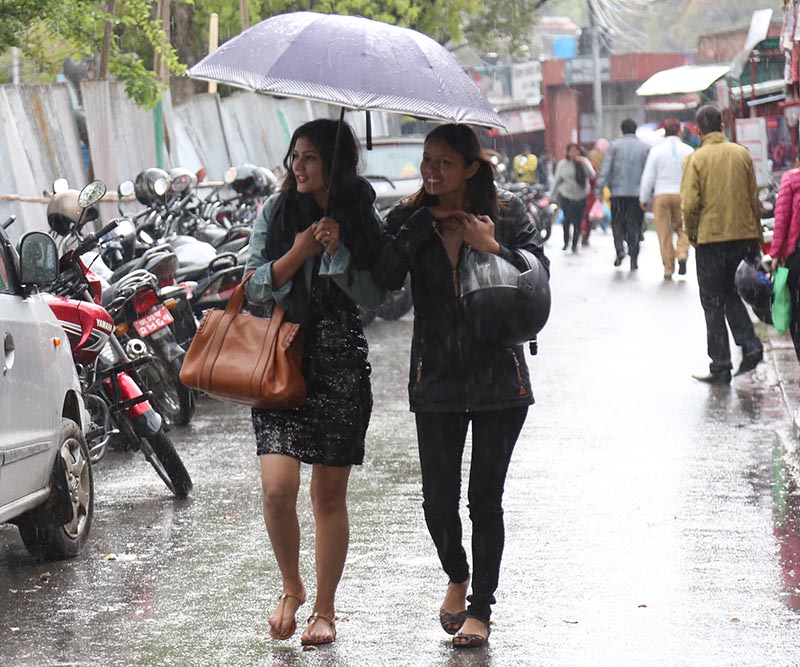Mercury dips further with post-monsoon rain in Valley
Kathmandu, October 30
With rainfall in the last two days, denizens in Kathmandu Valley have started feeling the cold weather bite in the morning, evening and night.
According to Meteorological Forecasting Division, the sudden fall in temperature was the result of post-monsoon rain triggered by the north- westerly wind.
Meteorologist at the Division Suvash Rimal said the westerly trough which was produced by wind that from the Mediterranean Sea has affected Nepal for the last four days.
“So far, the entire country has been witnessing disturbed weather, hailstorm, snowfall and isolated rain because of the westerly trough, which is likely to continue for the next two days.” He told The Himalayan Times, adding, “It added sudden nasty cold in the beginning of the cold season in Kathmandu Valley and other areas.”
He said the westerly trough is expected to clear up from Nepal by November 1. Until then, the country will witness snowfall in the high mountain areas and isolated rain from central to eastern Nepal.
MFD recorded 9.2 Celsius minimum temperature in Kathmandu, whereas it was 13.6 Celsius on October 28. With the rain of October 28, the minimum temperature decreased to 9.5 Celsius on October 29.
It is said that with clouds formed by the westerly wind blocking the sun, the maximum temperature falls slightly but people feel the cold. Similarly, when the sky remains clear and the minimum temperature falls, people do not feel so cold because they feel the warmth of the sun during day time.
According to Department of Hydrology and Meteorology, rainfall and cold will both be normal this winter. The department said no special system that can change Nepal’s winter pattern has been seen yet.
Last month, South Asian Climate Outlook Forum (SASCOF-11) released Consensus Statement on the Forecast for 2017 October to December (OND) Season Rainfall and Temperatures over South Asia. It said, “Below normal rainfall is most likely during the 2017 October to December Season over some parts of India, north Sri Lanka and some northeastern areas of the region. Similarly, normal to slightly above normal temperatures are likely during the 2017 OND Season over most parts of the region.
Generally October and November in Nepal are considered post-monsoon. Winter season starts in Nepal from December when days are shorter and the minimum temperature hits from one to around zero degree Celsius.
Climatic conditions of Nepal vary from one place to another according to geographical features. In the north, summers are cool and winters severe; while in the south, summers are tropical and winters are mild.






